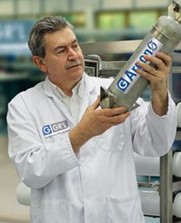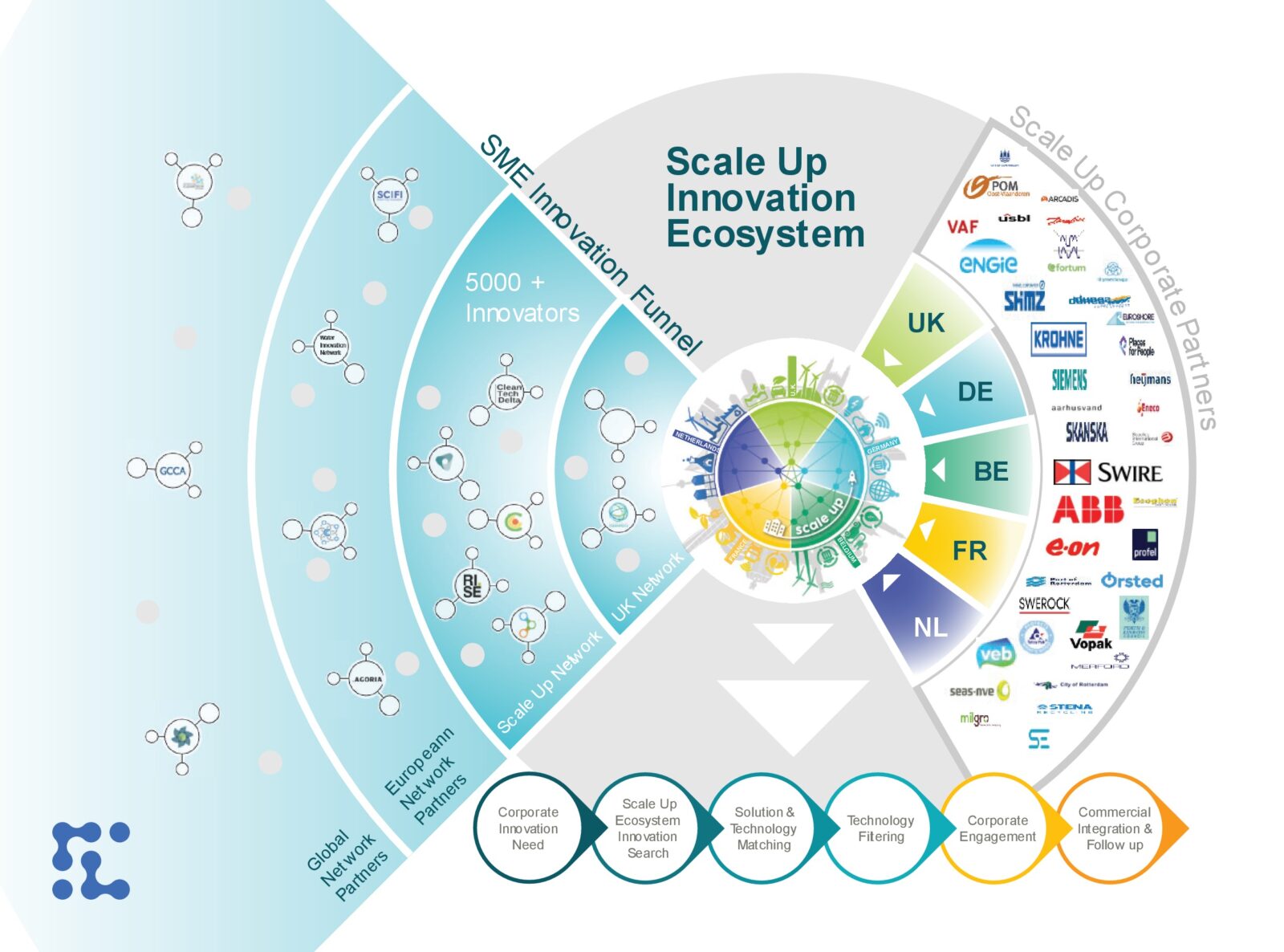It takes a village to bring up a child, so does it need a climate tech ecosystem to bridge the gap between concept and industry adoption of disruptive innovation?
The Climate Tech SuperCluster aims to be a growth engine for climate tech innovation, but interestingly it is not based on a single geography, it brings together innovators, corporates, investors, academia from across UK, France, Germany, Belgium and the Netherlands. It offers accelerator programmes, analysis and insights, and showcase opportunities for early-stage companies.
It is focussed on three grand challenges
- Growing the hydrogen economy
- Decarbonising the grid with a focus on renewable energy
- Renovation of homes to meet net-zero targets
Research reveals innovation challenges
Academic research has shown a number of common challenges experienced by innovators in sustainability.
- The incumbent technology has the benefit of scale and lower cost-base – new business models are needed to support adoption of new technology
- A mind-set change is required for the customer to embrace externalities as part of the solution
- Technologies may not ‘swap in’ to the existing supply chains, so a system change is needed
- There is a need for external support for dynamic capabilities such as facilitating the formation of a shared vision (sensing) and inducing others to make investments (seizing)
We asked Sam Goodall, co-founder of the Climate Tech Supercluster for his insights.
Role of the climate tech ecosystem
“The landscape is changing in relation to innovation in climate tech and sustainability; almost across the board now, any new innovation within climate tech must have that bottom line benefit as well as that core sustainability or net zero dimension,” says Sam.
“And we’re finding that the classic open innovation funnel model – where the corporate identifies a need – is not actually that reflective of reality.
“Increasingly, people talk about ecosystem engagement being the key part, so the relationship between the innovation and the corporate might come more indirectly.
“Maybe it comes through a university partner, a supply chain partner, or even a government collaboration or innovate research type activity.”

System disruption and business model innovation
“Our theory of change is that ecosystem engagement is absolutely critical: as system disruption requires working with multiple parties,” he continues.
“For example one of our cohort of early-stage companies has found a way to make hydrogen from single-use plastic. Such an innovation will need system change, starting from a public sector partner that has a supply of plastic that is currently going to waste, through to a corporate partner interested in the new material as an off-take. Very often you need to work with an engineering partner who can help develop your technology, or potentially a university, that will help with the innovative research you need to do to get your system functioning and into the market.
“However, not all innovators are about trying to fully disrupt the system.
“Although the challenge of replacing the incumbent is common, this is not the only route to success. Very often, companies will have the option to license their technology to the incumbent or, alternatively, to collaborate with them. Many will have more promising business models if they work with the existing providers rather than try to fully displace them.”
The climate tech ecosystem is considered crucial by early-stage companies, we asked them what was on their wish list for the Supercluster.

Prioritise delivery of hydrogen below $2/kg -Augusto Bartolome, Electrogenos
Electrogenos does not require structural changes for adoption, but its deployment would be significantly facilitated by strong regulatory incentives, an evolving energy cost structure, growing modular integration practices, and advances in supporting infrastructure, says Augusto.
Unless the Climate Tech ecosystem focuses its lobbying efforts on the real challenge—cost competitiveness—we risk wasting momentum on scaling technologies that cannot deliver economic hydrogen, effectively killing the ecosystem before it begins.
The biggest barrier to green hydrogen scale-up today is not supply—it’s demand, which is being held back by high costs and the inability of current electrolyser systems to consistently deliver hydrogen below $2/kg. Most incumbents are stuck at $4–8/kg, even in optimal conditions.
We need coordinated industry analysis and honest exposure of where current solutions fall short. Lobbying needs to shift from broad support for “any” green hydrogen project to targeted mechanisms that enable deployment of next-generation systems — that are riskier but essential for unlocking <$2/kg green hydrogen.
Without this shift, we’re reinforcing the status quo and delaying real market activation.
Electrogenos aims to produce hydrogen at <$2/kg when electricity is $40/MWh. But to reach get there, we need deployment at scale. That’s where the ecosystem comes in—by advocating for off-take frameworks (like CfDs, green procurement, hydrogen quotas), spotlighting the limitations of legacy systems, and supporting pilots for high-impact innovations.
This is how the ecosystem can help the right technologies cross the chasm—from lab to market—and ensure green hydrogen has a viable economic future.
Mind set change is required – H2Upgrade, Rob Grant
A mindset change is required to move from business as usual ‘paying for incineration’ through to ‘local processing of waste streams into valued added products’, says Rob.
We see the Climate Tech ecosystem as key in lobbying for a more sensible approach to sustainability and decarbonisation in the medium scale industry sector. Currently all the effort goes into the large central, industrial users which results in many projects not making it past the final investment decision. A focus on smaller, distributed users would give a greater chance of success.


Consider alternatives for long-duration energy storage – Simon Belka, Shifted
Regulators must classify long-duration storage as a grid asset, eliminating double-taxation on charging/discharging which still happens in some countries, says Simon.
There is a strong lobby to position Lithium Ion batteries as the silver bullet of storage – they do have a role, but also we cannot ignore their environmental impacts and poor recyclability. Alternatives are needed especially for long duration energy Storage (LDES).
We see a role for the ecosystem to actively promote alternatives and encourage the government to support this through specific call for tenders and regulation, that is more open and not only designed for batteries.
Lobby for change – Ignacio Luque Heredia, Silbat
Yes, we see a significant role for the Climate Tech ecosystem in lobbying for change and identifying trends that can support the introduction of our technology, says Ignacio.
We are already actively participating in lobbying efforts, which are often based on thorough techno-economic analyses prepared by first-tier consultancy firms. These analyses provide valuable insights and are presented to governmental bodies to advocate for supportive regulations and policies.
Being part of the Climate Tech ecosystem not only amplifies our voice in these lobbying efforts but also facilitates collaborations that can drive innovation and market acceptance. Networking with other stakeholders allows us to stay ahead of emerging trends, share best practices, and identify opportunities for joint initiatives that can further enhance the adoption of our technology.



